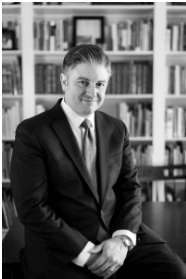
Sometimes a brief encounter can change your life. This is what happened to Frank Costanzo. While working as an Associate Packaging Engineer at the Schick Razor Company in Milford (CT), Frank worked part-time at an after school program in New Haven. It was this job that changed his career path from engineering to education. Some would question this change, since these are two different professions. They would wonder how he could transfer his engineering skills to those for an educator. This was not an issue for Frank, but a welcomed challenge.
As a packaging engineer, Frank solved problems utilizing science, technology, management and engineering. These skill sets were easily transferred to his roles in education through the building of lesson plans, managing classrooms, implementing the latest technologies … etc. Dr. Costanzo was sure of the change as his passion for education and school reform was illustrated by his research for not just teacher educational programs, but ones that focused on the latest practices and were grounded in a core set of values that sought to reform the way schools are structured and run.
Frank Costanzo settled on Brown University, the origin for acclaimed education reformer Ted Sizer’s Coalition of Essential Schools movement. The essential principles, the underpinning of Sizer’s vision for the purpose of schooling, include learning to use one’s mind well, less is more: depth over coverage, goals apply to all students, personalization, student-as-worker, teacher as coach, demonstration of mastery, a tone of decency and trust, commitment to the entire school, resources dedicated to teaching and learning, and democracy and equity, each of which resonated with Frank.
After successful teaching assignments, Frank went on to receive his Master’s in Education from Harvard University, a program which included studying under Dr. Tom Payzant and Dr. Deborah Jewell-Sherman, two of the most effective urban district superintendents in the country. Frank Costanzo rose from teacher to principal in a short amount of time and then became Chief of School Operations for Norwalk School District (CT). He continued his education and received a doctorate in Organization and Leadership at Columbia University, Teachers College, after successfully defending Student Transience in an Urban Portfolio School District: A Guide to Advancing Equity and Student Learning Outcomes, in the fall of 2016.
Dr. Frank Costanzo’s passion for teaching and reforming education is illustrated through his numerous achievements, such as the transformation of Cooperative Arts and Humanities High School (Co-Op) to a Silver Medal High School, increase in college persistence rates and the expansion of Co-Op’s Advanced Placement program. Frank has made great strides in school reform for his school district. He continues to create safe and creative learning environments in Norwalk Public Schools.
How Schools Can Become More Engaged in their Community
When the weather is nice, we see students outside trying to attract people to come to their car wash to raise money for their school sports team. Rarely do we see students and teachers outside attracting people for a charity or performing a community service (when it is not a holiday). The goal of getting students and teachers engaged in their community is to promote teamwork, humanitarianism and positivity.
It all starts with having a vision of how the school will engage with the community. The vision should be created by teachers, administrators and students. It is important for everyone to have a voice in the process, to incorporate different points of view. By engaging in their community, students benefit from learning about different careers, setting and achieving goals, and improving social skills. The community also benefits by connecting with students and teachers, teaching the students and learning a new activity.
Below are some ways schools can become engaged in their communities.
- Partner with Civic Groups — By partnering with civic groups in the community (e.g. Boy and Girl Scouts), schools can see how these organizations function and the benefits of their community acts. It also establishes the school’s role in the community. The school can also partner with businesses.
- Hold an Open House — This is usually reserved for parents, but the school should be open to the community. Students and teachers can display projects as well as put on a presentation that covers the curriculum, sports and social activities. Also, stakeholders will get a better view of how the school from a community perspective.
- Reinvent the School — The school can hold a design contest for the community to redesign a classroom, paint a mural in or outside of the school, plant a garden on school grounds … etc. The contest would bring people, staff and students together. Students and citizens can learn from one another as well as build valued relationships.
- Create a Community Resource Map — This activity brings people of all walks of life together to visually map out the community, including businesses, schools, the public library, the police station … etc. Everyone will have fun creating the map, while utilizing a number of skills, such as creativity, leadership and communication. It is important that students understand what is in their community and how they can be a productive member of it.
